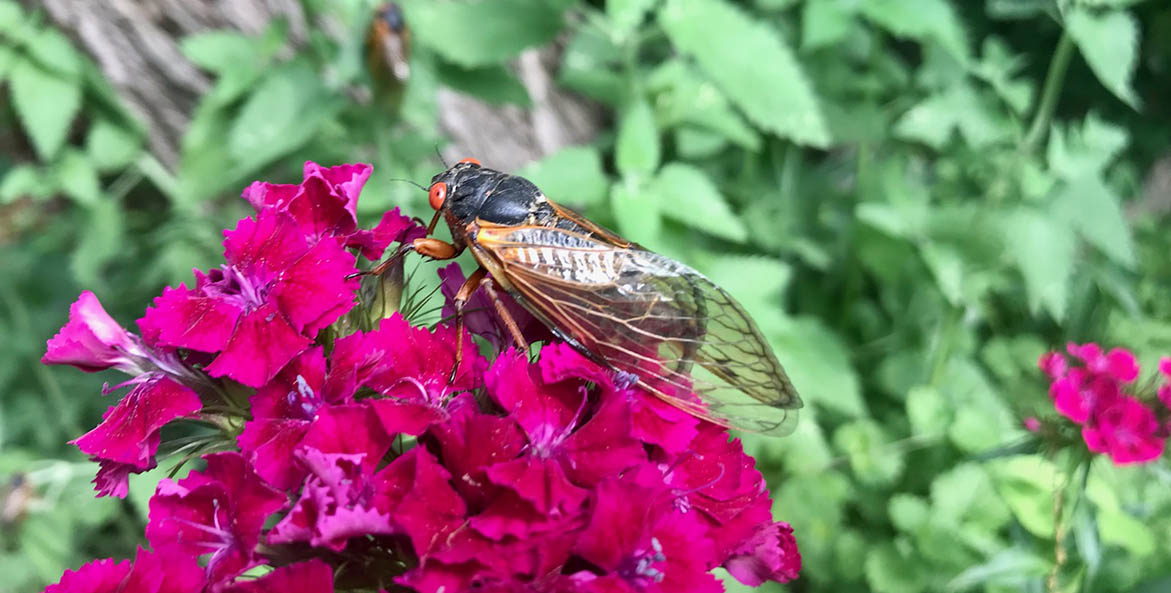See the complete Nature Journaling series.
Cicadas are back! And they are back in a big way. This year marks the emergence of a particularly special group of periodical cicadas known as Brood X. Though they are not the only group of periodical cicadas, Brood X is the largest population with a range stretching from New York to the Midwest. This brood covers a vast area of the Chesapeake Bay watershed making it an especially exciting natural event in our area. It's essentially an entomology Woodstock for scientists and bug-lovers alike.
Even though they are just now making their formal appearance, these cicadas have been in the area for quite some time. Tunneling below the topsoil and nursing on sap-filled roots, wingless cicada nymphs spend nearly two decades in the dark. With a 13–17-year lifespan, periodical cicadas are one of the one of the longest living insects on the planet. And for Brood X, year 17 holds many big milestones.
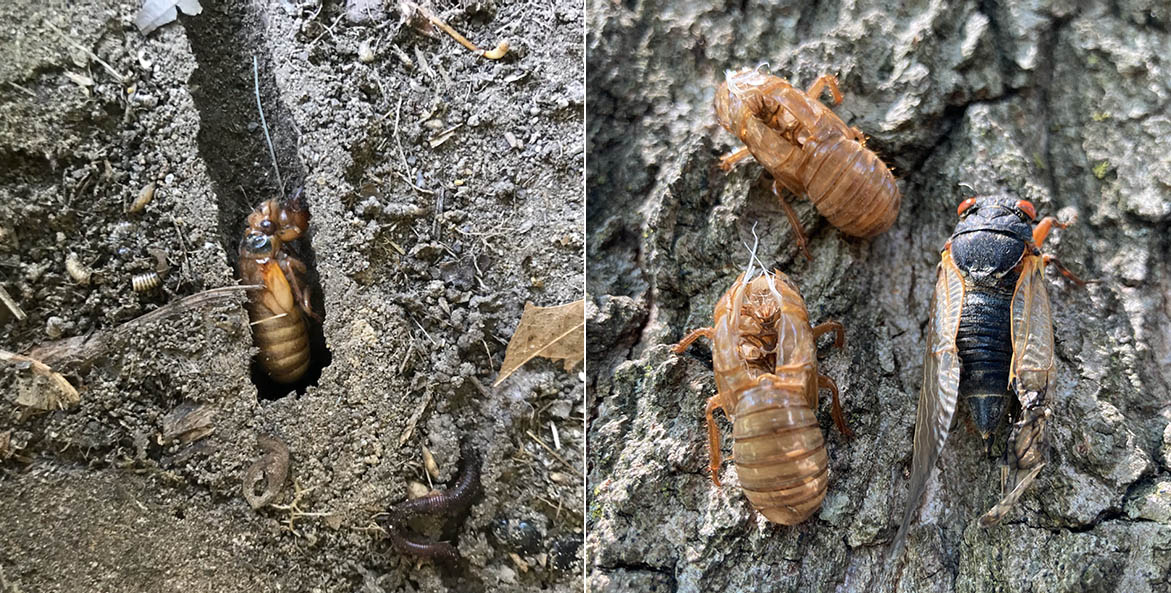
Brood X nymphs dig their way out from deep in the ground to emerge from their shells.
Kris Belessis/CBF Staff
Within a matter of days, millions of nymphs emerge from the ground like tiny armored zombies. They immediately head for higher ground where they molt into their final form. Not unlike blue crabs shedding their shells, adult cicadas must wait for their exoskeletons to harden before beginning their next adventure. Their fully formed wings and strengthened bodies allow them to stir up quite a racket. The males croon out their love ballads waiting for the wing snap of consenting females. This choral act turns out to be their collective swan song for once the females deposit their fertilized eggs the entire generation will begin to die back. Over the summer the baby nymphs will drop to the ground to begin the cycle again. Seventeen years underground for only a few weeks of raucous fun in the sun.
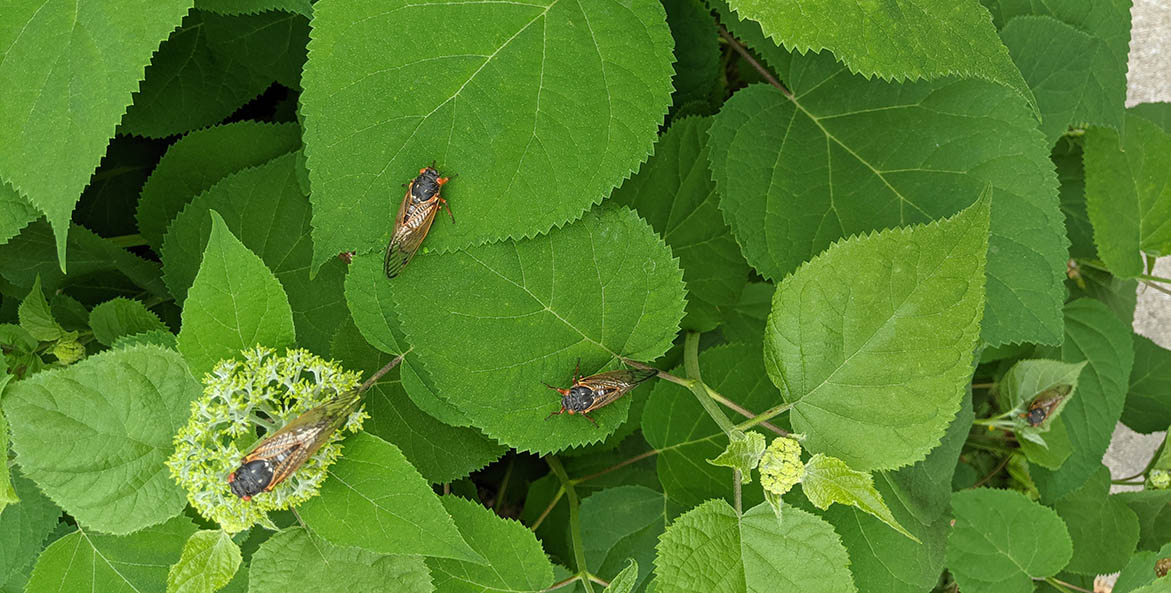
A group of cicada wait for their exoskeletons to harden.
Claire Cambardella/CBF Staff
During their short stay here, Brood X will fill the bellies of species all over. They will enamor us with their papery husks and tree-top concerts. And they will keep researchers and entomologists busy for months to come. When it's all said and done, another 17 years will have to pass before we welcome Brood X again.
Take advantage of this insect celebration. Hone your observation skills and get your questions answered. Brood X won't be around for long!
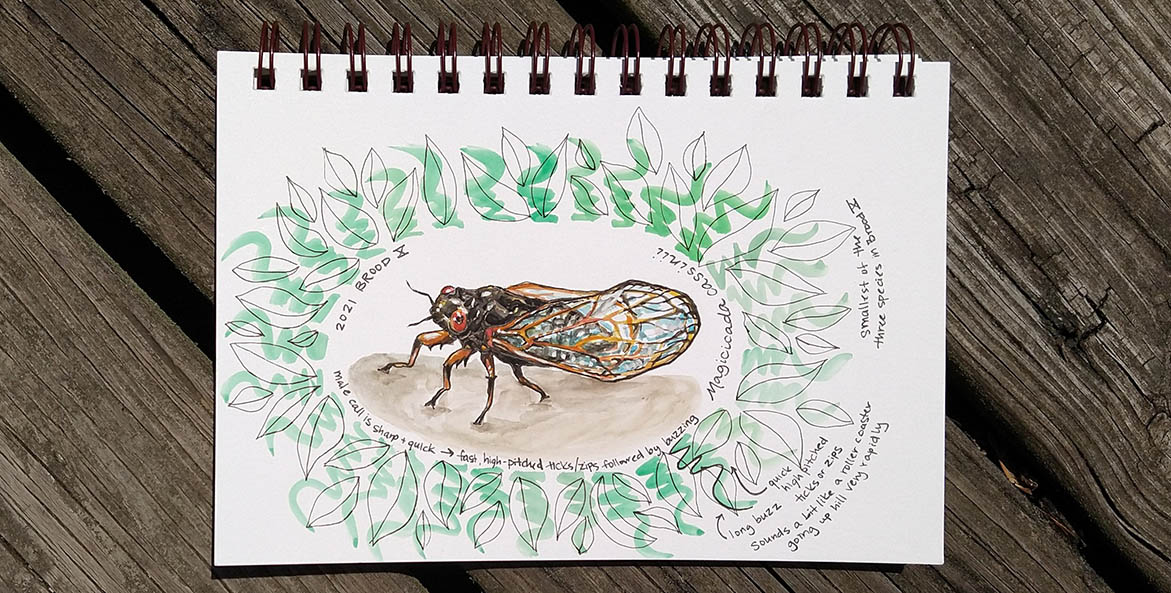
Sketch of cicada M. cassinii and a visual pattern of the male mating call, drawn by CBF Educator Kathlean Davis.
Kathlean Davis/CBF Staff
Art Prompt: Cicada Song
Materials Needed: nature journal or paper, pen or pencil, coloring materials*, internet accessible device* (*optional)
Assignment: Within Brood X, there are actually three separate periodical cicada species. They are closely related and visually similar. However, the males of each species have a distinct call that enables them to attract female mates of the same species. When grouped together in large numbers, the cicadas' individual songs blend together to create a chorus.
Find a safe spot to observe outside. Listen for a cicada song. Species M. septedecium often sings "Pharoh" very loud and slowly. M. cassinii and M. septendecula have shorter, high pitched calls that resemble buzzing ticks and tss's respectively. Use the links below to try and identify which species is singing. Or, if you are in an area where Brood X is not present, use the links below to spot the visible and auditory difference between the three species. Create a sketch of the cicadas you observe or study. Surround your sketch with a drawing pattern that best represents the cicada song you heard.
Additional Resources:
- Magicicada septedecium, Cicada Mania
- Magicicada cassinii, Cicada Mania
- Magicicada septendecula, Cicada Mania
Further Questions: What other noises could you hear while listening for cicada calls? Were they natural or humanmade sounds? What impact do you think these sounds may have on the mating calls of the cicadas?
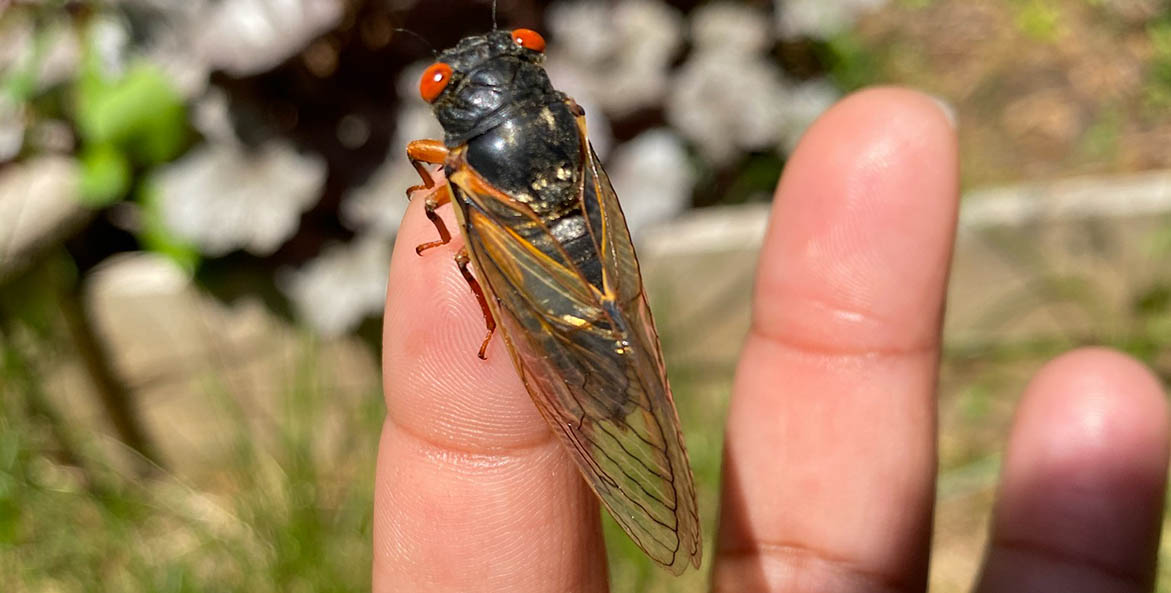
Cicadas are not harmful to humans, but handle with care.
Maya Alexander/CBF Staff
Writing Prompt: Dear Future Brood X
Materials Needed: nature journal or paper, pen or pencil
Assignment: For 17 years Brood X has waited to emerge from the ground. We must wait another 17 to see this species above ground again. What kind of world will the next generation of Brood X crawl into in 2038?
Find a safe spot to observe outside. Take in the world around you. What do you see, hear, smell, and feel? Imagine the changes that will take place over the next 17 years. While considering these thoughts, write a letter to the next generation of Brood X. What do you hope for them? What challenges may they face? What role will humans play in the advance or decline of these species?
Additional Resources:
- Letter-to-self, PBS Newshour Extra
- Opinion: The cicadas are coming. And they're changing dramatically., Washington Post
- Cicada season: What to expect from the coming brood that's been underground for 17 years, PBS Newshour
Further Questions: What environmental concerns pose a threat to the Brood X generation of 2038? What can you do to help?
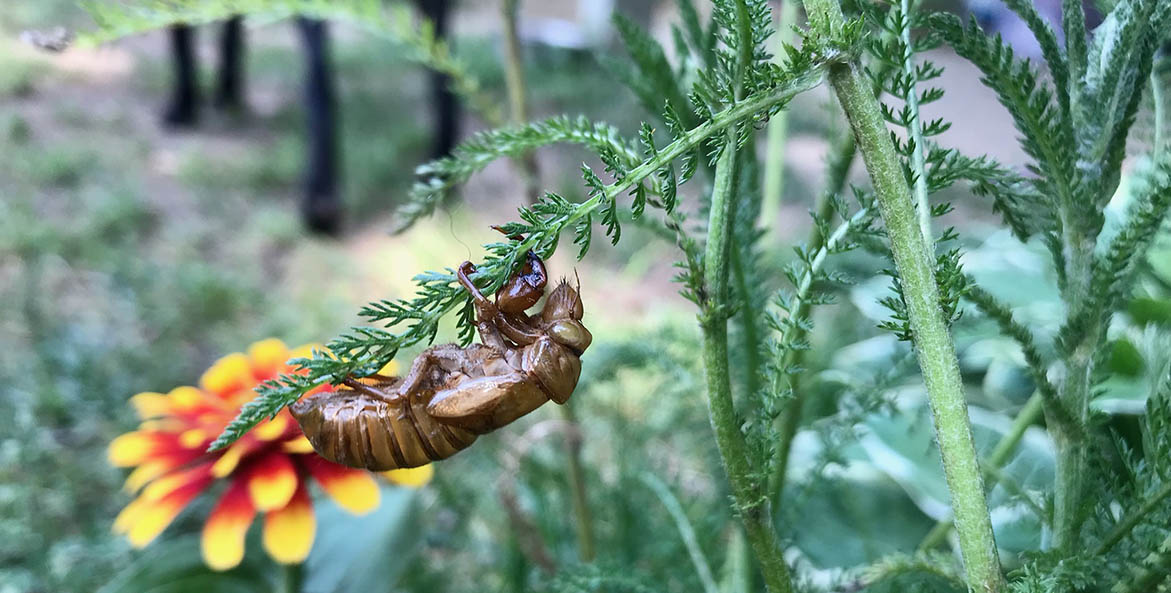
Once cicadas emerge from the ground, they climb upwards before breaking through their shell.
Kris Belessis/CBF Staff
Check out more Nature Journaling prompts.

